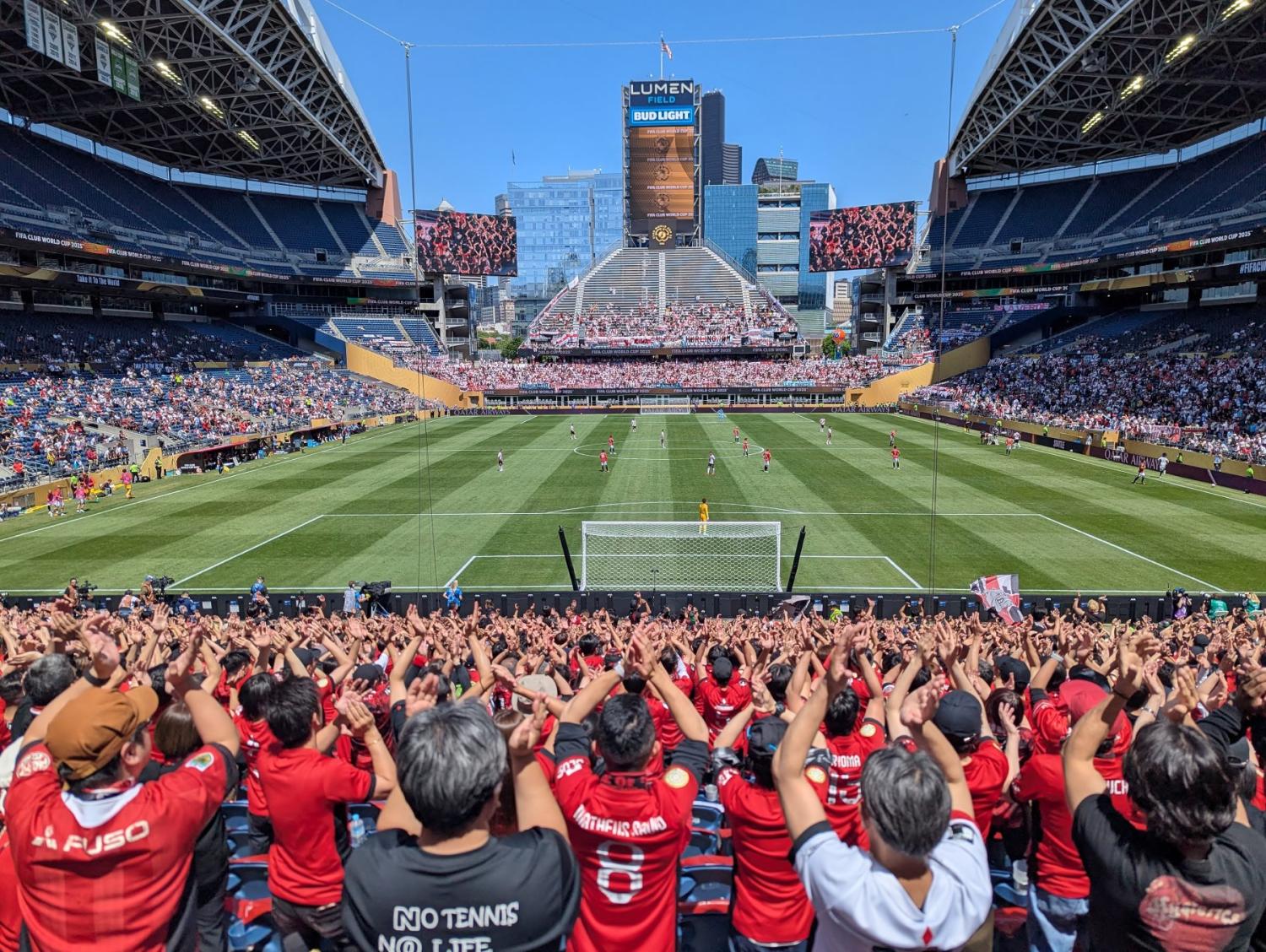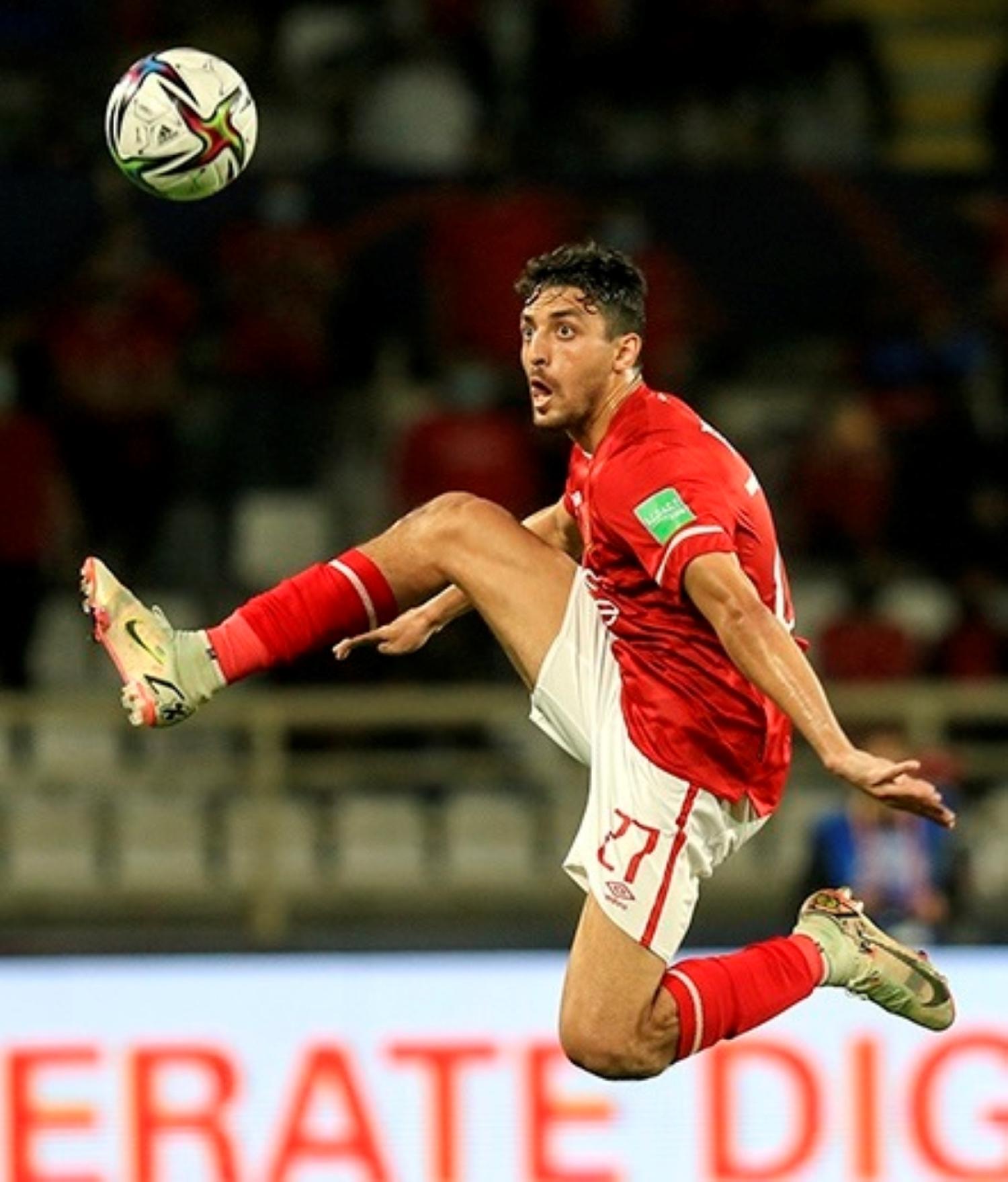Soccer joins the club
Top image: English soccer club Chelsea celebrate after winning the 2021 FIFA Club World Cup. (Photo: Fars Media Corporation/Wikimedia Commons)
The FIFA Club World Cup, being held through July at venues across the United States, highlights international collaboration and concerns that soccer schedules are too packed
On June 14, the Fédération Internationale de Football Association (FIFA) Club World Cup kicked off with Inter Miami CF taking on Al Ahly in Miami, Florida. Although the Club World Cup was established in 2000, interruptions and changes in format led FIFA to completely reimagine the tournament as a format that mimics FIFA’s premier tournament, the World Cup.
The Club World Cup serves as an appetizer for next year’s World Cup, being held in North America, which pits national soccer federations in the largest single sport event in the world.

Jared Bahir Browsh is the Critical Sports Studies program director in the CU Boulder Department of Ethnic Studies.
There have been a number of club tournaments run by FIFA and continental and inter-continental confederations, several of which were established in the 1960s, including the FIFA Intercontinental Cup and the Champions Cup overseen by the Confederation of North, Central America and Caribbean Association Football (CONCACAF). Unlike the World Cup or other tournaments between international federations, these tournaments offer professional clubs from leagues around the world the opportunity to compete against each other.
In 1958, Brazilian Sport Confederation head João Havelange, who later went on to be the longest-tenured president of FIFA (1974-1998), suggested organizing a regular intercontinental cup between top European and South American clubs. There had been a few other attempts to establish international club cups, one of the earliest being Copa Aldao, a tournament between Argentine and Uruguayan clubs that started in 1913.
Copa Aldao was abolished in 1955 after competing national team and club schedules made it difficult to schedule the tournament, an issue that continues to affect national, continental and international club and federation tournaments today. These conflicts have included efforts by the South American Football Confederation (CONMEBOL) to establish a continental club tournament, which resulted in the South American Championship of Champions in 1948 and Copa de Campeones de América, now known as CONMEBOL Copa Libertadores, in 1960.
Five years earlier, in 1955, the Union of European Football Associations (UEFA) began the European Champion Clubs' Cup (now the Champions League) a year after UEFA was established. The Tournoi de Paris, first hosted by the club Racing Paris in 1957, featured clubs from UEFA and CONMEBOL in a friendly tournament and prompted the creation of the FIFA Intercontinental Cup in 1960 between the champions of CONMEBOL Libertadores and the UEFA Champions League.
These tournaments were part of a larger effort to organize and expand international soccer in the 1950s and 1960s. Before this effort, the only international soccer confederation in existence was CONMEBOL, organized in 1913, with the North American Football Confederation (NAFC) and Confederación Centroamericana y del Caribe de Fútbol (CCCF) in Central America coming only after the first World Cup, in 1930.
Growing confederation
FIFA spent most of the first half of the 20th century trying to organize international soccer. The nations of the British associations boycotted World Cup play as FIFA included the Central Powers as they reorganized in 1919 after World War I. The British associations rejoined the next decade, but left again in 1928 over disputes related to payments to players and the maintenance of traditional ideas of amateurism. The 1942 and 1946 editions of the World Cup were cancelled due to World War II, but as the premier international soccer tournament grew, so did the need to further organize international soccer. They came to an agreement in 1950, helping the World Cup to grow and emerge from the shadow of the Olympic soccer tournament.
Through the 1950s and 1960s, the Asian Football Confederation (AFC), Confederation of African Football (CAF), CONCACAF (a merging of NAFC and CCCF) and Oceania Football Confederation (OFC) joined UEFA and CONMEBOL to establish the current continental confederations. CAF, AFC and CONCACAF all founded their own Champions Leagues in the 1950s and 1960s, which were contested between top professional clubs in each confederation.

Urawa Red Diamonds fans cheer during a June 17, 2025, group stage match at the 2025 FIFA Club World Cup against Club Atletico River Plate at Lumen Field in Seattle, Washington. (Photo: SounderBruce/Wikimedia Commons)
Half of the teams in the Club World Cup qualified automatically through the confederation’s club Champions Leagues or the Copa Libertadores. In the case of Inter Miami, which is the host, the team qualified by winning the Supporters’ Shield, or the MLS regular-season championship, in 2024. This decision was controversial given that the L.A. Galaxy won the MLS Cup in 2024; FIFA President Gianni Infantino admitted that Miami’s soccer culture and the presence of Lionel Messi partially motivated Inter Miami’s inclusion.
The other half of the qualifying teams were selected based on their rankings in their respective confederations. LAFC won a play-in game against Club América after Club León was disqualified due to shared ownership with fellow Liga MX team Pachuca. Out of the 32 teams in the Club World Cup, 20 are from either UEFA or CONMEBOL, with Europeans teams guaranteed 14 spots in the tournament.
Infantino knew that for this tournament to be successful and grow in popularity, he needed to financially incentivize the top teams in the top confederations to play in the Club World Cup. There is a staggered prize money framework for qualification, with top European teams such as Manchester City earning more than $38 million USD for making the tournament based on sporting and commercial criteria, whereas qualifying OFC teams were awarded $3.58 million.
Busy schedules
The confederations oversee both intra-nation club tournaments and contests between national teams within the confederation. However, despite general oversight by FIFA, there are still conflicting schedules and growing complaints about the increasing number of soccer competitions and the struggle to balance club schedules with national team obligations.
The FIFA Club World Cup exemplifies one of the issues with the ever-expanding soccer schedule: direct conflict between club and inter-nation tournaments. The United States is hosting the FIFA Club World Cup and the CONCACAF Gold Cup at the same time. Most of the matches for the Club World Cup will be held east of the Mississippi, and the Gold Cup matches are being played in the Midwest and West Coast, with no shared venues and the Los Angeles area the only location to host matches for both events.
Several teams had to choose between the two competitions, and with the U.S. Men’s National Team automatically qualified for the 2026 World Cup as one of the hosts, and the larger payout of the FIFA Club World Cup, players like Timothy Weah, Weston McKinnie and Giovanni Reyna have decided to compete on behalf of their professional clubs rather than their national team.
The Club World Cup also comes on the heels of the UEFA Nations League Finals June 8. Players like Nuno Mendes, who helped lead Portugal to the Nations League championship, will have to quickly pivot to play with Paris Saint-Germain a week later for the Club World Cup. The international club soccer schedule runs from late summer through early spring, meaning players like Mendes are forced to play multiple tournaments during what is supposed to be their offseason.

Egyptian soccer star Taher Mohamed plays for Al Ahly SC in the 2021 FIFA Club World Cup. (Photo: Fars Media Corporation/Wikimedia Commons)
A number of players have expressed concern over being overworked, with some even calling for a strike for FIFA and for club leagues to reduce the schedule; some players are being pushed to participate in more than a match a week on average.
Several players and managers have said they see the Club World Cup as a money grab by FIFA, expanding the competition schedule to encroach upon the club offseason. The MLS plays a spring-to-fall schedule, so the North American league will be forced to suspend play during the Club World Cup. But the three MLS teams—the Seattle Sounders FC, Inter Miami and LAFC—do see it as a way to compete with top professional clubs and may adjust their schedules before the next Club World Cup to fall in line with the rest of the world.
FIFA scandals
FIFA has long faced a number of scandals and bribery charges, including with partner International Sport and Leisure, which handled marketing and media rights for the soccer organization but folded in 2001 with debts of more than $200 million. This led to the cancellation of the Club World Cup that year. The organization was subsequently investigated by authorities in Switzerland and charged with fraud. Later, as a part of the 2015 FIFA corruption scandal investigation, several sports marketing executives and officials with continental football bodies were found to have bribed FIFA officials including Havelange.
The 2015 scandal was also centered on bribery and collusion related to sports marketing and media rights; the FBI and IRS uncovered impropriety among executives of CONMEBOL and CONCACAF, several marketing firms and even Nike, which was found to have spent $40 million on bribes to become the exclusive apparel company for the Brazil national team. In spite of CONCACAF’s involvement, and a year delay in the bid process due to the scandal, the combined North America bid still won the 2026 World Cup.
Although no impropriety has been alleged around the 2025 Club World Cup, FIFA is still accused of participating in a money grab, with greed overshadowing team concerns and player health. The pace of top-level soccer also has increased over the last quarter century, with more running and pressing being partially blamed for more injuries along with the ever-growing schedule. Sponsors also have been hesitant to become involved over questions related to viewership, attendance and return on investment for the revamped tournament.
To combat concerns and attract top clubs and players, FIFA has offered a $1 billion prize pool, with top-qualifying teams like Manchester City able to earn up to $125 million if they win the tournament. The amount a team like Real Madrid could earn would be on par with the prize money for making the UEFA Champions League quarterfinals, but some of that money is offset by costs including early signings or transfers to boost talent before the tournament.
Each win and draw from the group stage through the final will earn teams money, but there are also questions of where that money will go. Many players in the MLS clubs are currently petitioning the league, which owns all the clubs, for a prize-money share. The Club World Cup is not specifically mentioned in the collective bargaining agreement with the MLS Players Association, and caps on tournament compensation shares could lead to a disproportionate windfall for the league—with players getting what they see as a share below international standards if any of the league’s teams make a run. Seattle Sounders players wore T-shirts with the message “Club World Cup Ca$h Grab” before their June 1 match, and several players have posted criticisms campaigning with the #FairShareNow hashtag.
Another shadow over the Club World Cup is international and domestic tensions related to the Trump administration. Travel bans have created concern among players, while social media posts by Immigration and Customs Enforcement (ICE), which were later deleted, hinted at the agency showing up at the first match in Miami and possibly using the soccer tournament to target undocumented immigrants. Some have blamed potential ICE presence at games for lower than expected attendance at early matches.
These concerns will fade if the tournament ends up being a success, and some of that will depend on the competition itself, which organizers hope will increase fan interest. Ultimately, seeing this many top clubs will be a fan draw, but the question is whether casual fans will be interested in the tournament in the same way as next year’s World Cup—ideally snowballing toward the 2029 edition and forcing sponsors, and possibly players, to warm up to yet another major tournament in an already crowded soccer schedule.
Jared Bahir Browsh is an assistant teaching professor of critical sports studies in the CU Boulder Department of Ethnic Studies.
Did you enjoy this article? Subscribe to our newsletter. Passionate about critical sports studies? Show your support.

